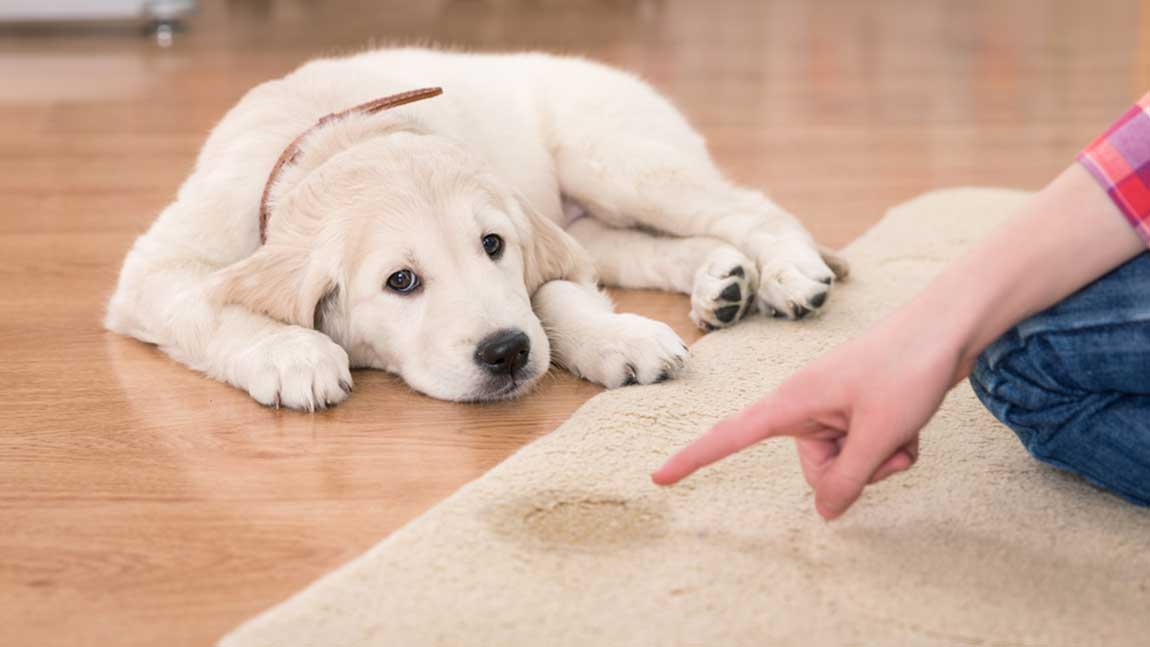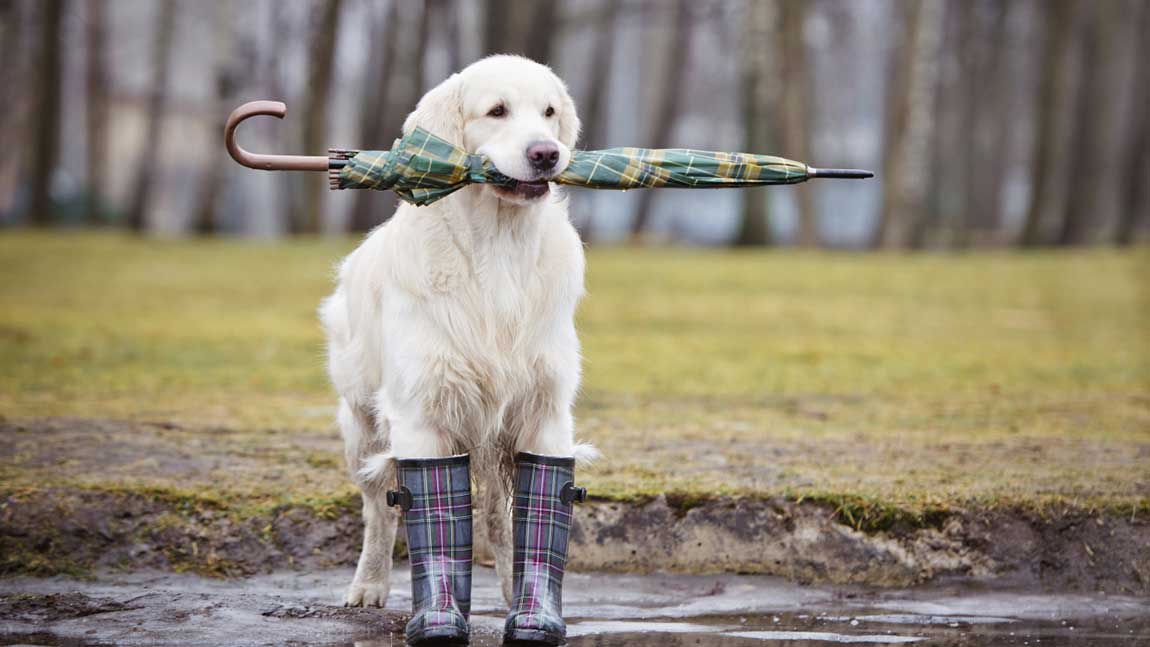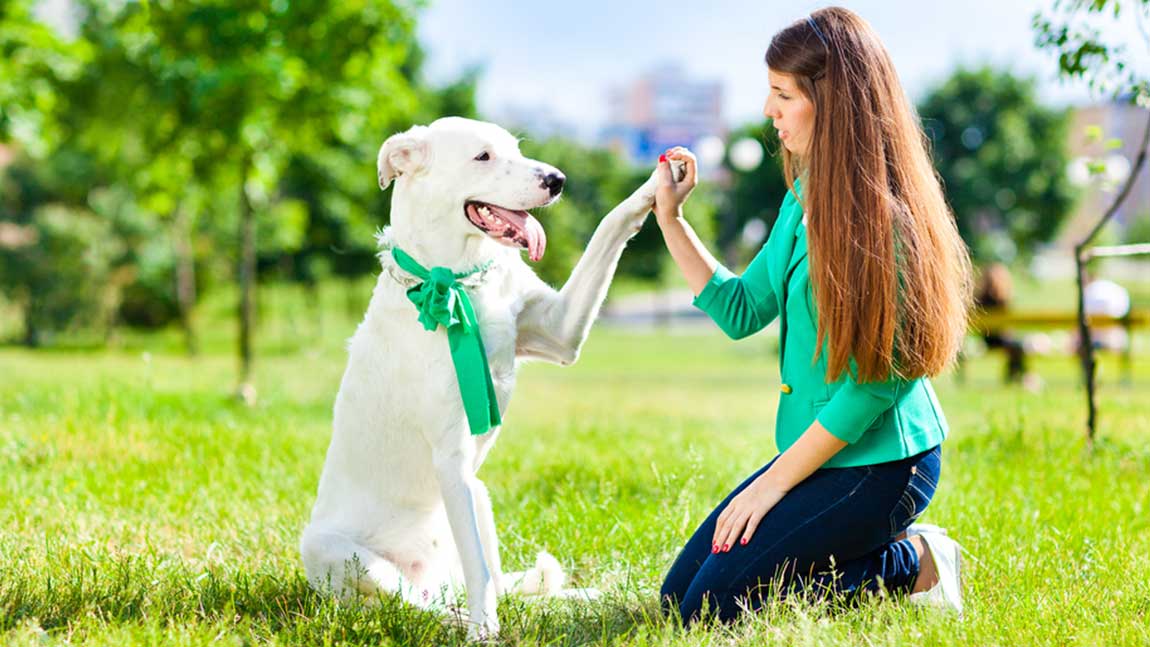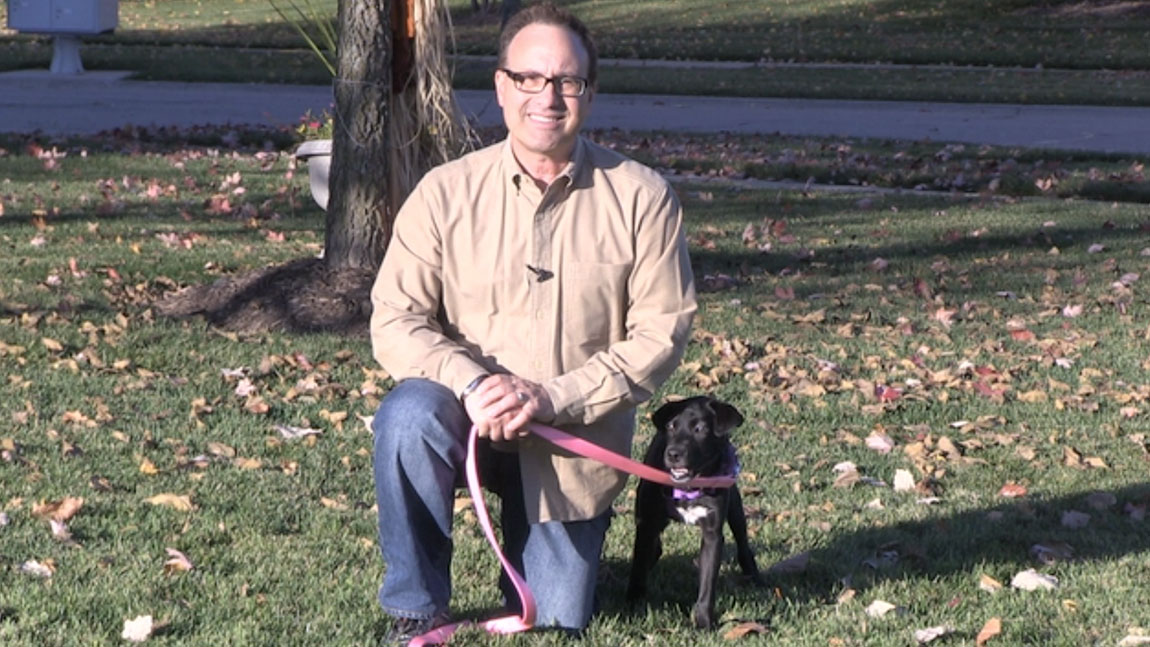By Steve Dale
It wasn’t long ago that we somehow expected puppies to magically learn house-training by taking them outside and pointing. Sometimes, we’d carry with us newspapers that puppies had used indoors. And while just as ineffective, that at least offered the pup some information about what to do and where to do it.
And when there were the inevitable accidents, a common response was to rub the puppy’s face in the mess, or to swat at the pup’s rump with a rolled-up newspaper. This punishment might communicate to the pup that we don’t want to see poop or pee, or maybe just that humans can be unpredictably crazy, hence further encouraging the dog to sneak off and do its business in a corner or other out-of-the-way place.
The biggest problem with these human reactions is that puppies can’t possibly connect the dots. There is no positive reinforcement – someone saying, “Hey, now you’ve got it right!”
Using positive reinforcement, dogs will better learn house-training and catch on much faster than they do with antiquated training techniques. Accidents may still occur, but usually it’s due to “owner error” or simply a lack of bladder and bowel control.
Puppy owners can set themselves up for success by understanding their animals’ needs. Very young puppies typically must urinate (and perhaps defecate) immediately after they awaken, after play, after eating and after drinking.
Pet parents should take their pups outside on a leash upon completion of these activities. Using a leash gives you control and a first-hand perspective of whether or not your pup has had success. Repeat the words, “go potty,” “make poo-poo” or whatever it is you want to say as the pup is doing its business.
The moment your pup succeeds, offer a special, tasty treat like a piece of a Vita Bone® Chewy Stick, that is used only for this purpose. The treat should not only excite your pup, but also be fairly easy for you to deliver and for the puppy to eat. The key is instant gratification, and a puppy that has to chew on something for several minutes is distracted from the task at hand.
Remember as you offer the treat to provide praise and repeat, “nice potty” or “good doggy” in an upbeat and happy voice. Immediately afterwards, puppy owners should play a game with their dogs as a form of additional positive reinforcement.
The game can be a session of chase, tossing the ball – whatever the puppy likes. The game could last only 30 seconds or continue far longer. Without the game, some puppies learn that despite the wonderful treat, going to the bathroom is followed by going back indoors (not good) or their owners leaving for work (even worse). The game prevents puppies from making such negative connections.
Every puppy is different, and accidents will still happen. But the combination of the treat, verbal praise and game help puppies to learn the cue (“go potty”) and associate the act of going to the bathroom with positive experiences.
If the puppy isn’t “getting it,” it might be that your timing is off, or the dog just doesn’t need to go. Or perhaps it may be too cold outside, or the dog is intimidated by the noisy garbage truck that just went by. Generally speaking, though, positive reinforcement is the best way to house-train puppies.
Tips
- Crate training: Crate training is an effective way to keep puppies out of trouble when you’re not supervising. Puppies are hard-wired to not go to the bathroom where they live. So, using a crate can be helpful with house-training.
If a puppy has an accident inside the crate, one of the following scenarios may be the cause: The puppy was left inside the crate for too long; previously, the puppy sadly learned to live in its mess (e.g., puppies from puppy mills); the puppy is sick and just had to go; or, the puppy was exceedingly anxious about being in the crate. Still, crate training is a wonderful tool for most pups, assuming the puppy is appropriately taught how to be comfortable inside the crate (by using positive reinforcement).
- Time wasting: Some puppies just want to sniff around outside or may not have enough control to turn on their bladders. Don’t allow the pup to sniff for more than a few minutes, or your dog will train you to be outside for increasingly longer periods of time. After 10 minutes or so, go back inside if the dog hasn’t gone potty. If you believe puppy has to go, that’s an accident waiting to happen. As a preventive measure, put puppy inside its crate or tether puppy to you for five to 15 minutes. Then head back outside to try it again. Odds are that puppy will go, and when that happens, the special treat, praise and game are as important as ever.
Hints:
- Exercise, even pacing back and forth, promotes bladder and bowel movements.
- Going on-leash to the same place repeatedly makes that place the pup’s bathroom.
- Hollering at puppies for failing to do their business doesn’t help; instead, it likely scares or at least confuses them.
- Use a treat like Vita Bone® Chewy Sticks that is easy to break apart for training sessions.



